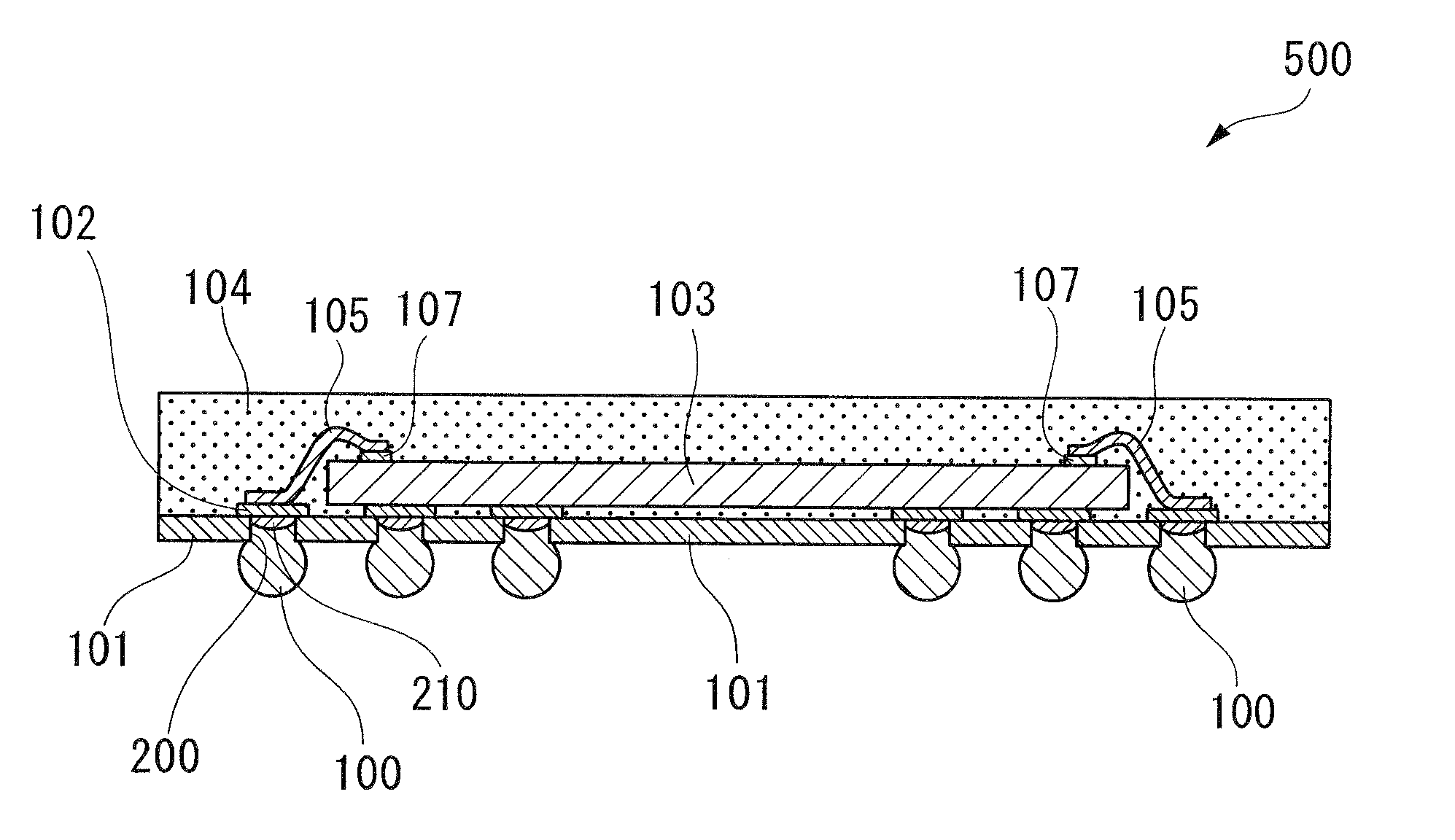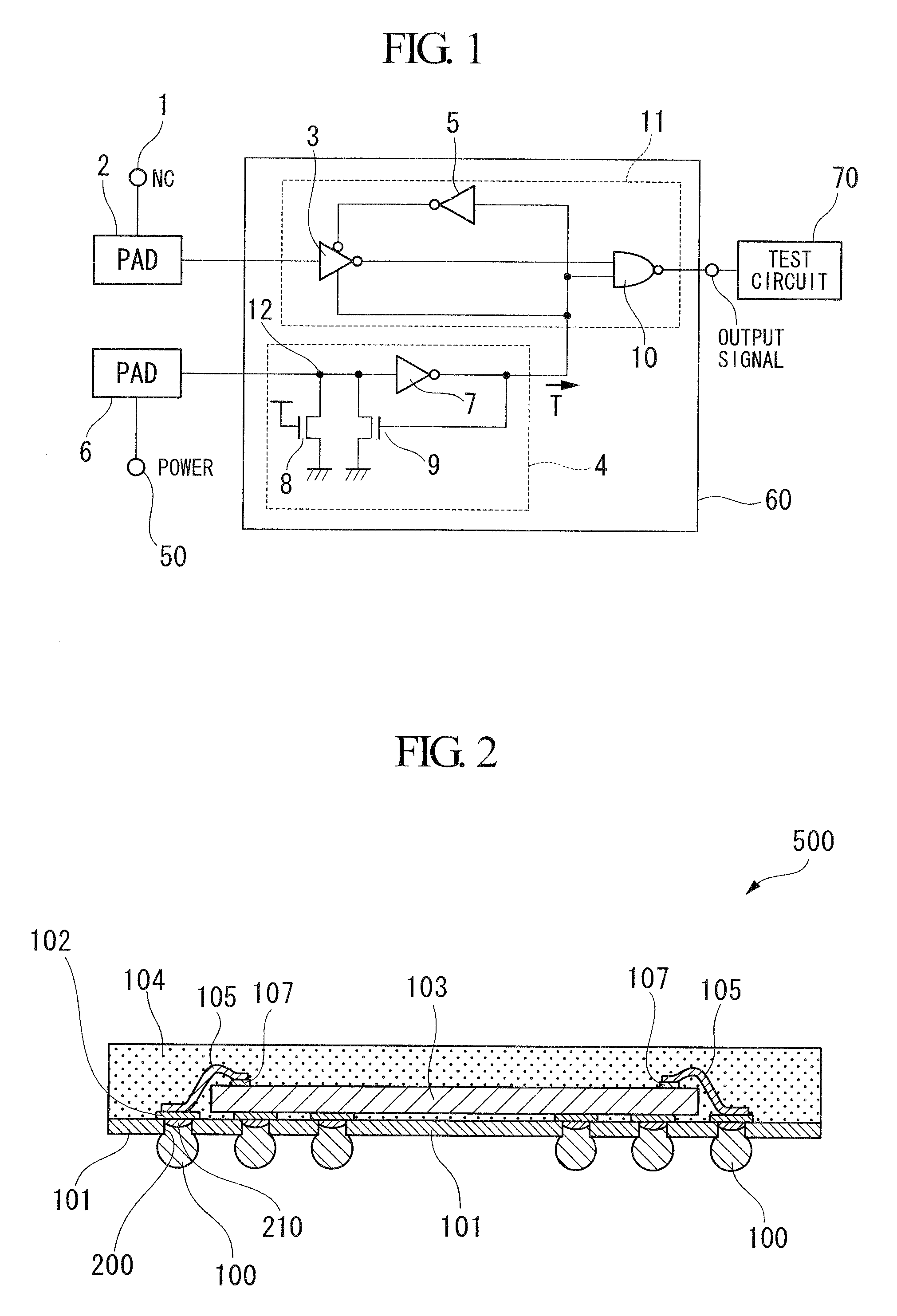Semiconductor device
a semiconductor and device technology, applied in the field of semiconductor devices, can solve the problems of inability to easily switch the semiconductor device the operation mode cannot be changed, and the semiconductor device cannot be easily changed to the test mode, etc., to achieve the effect of suppressing the increase in the circuit scale and the chip area
- Summary
- Abstract
- Description
- Claims
- Application Information
AI Technical Summary
Benefits of technology
Problems solved by technology
Method used
Image
Examples
first embodiment
[0038]FIG. 1 is a block diagram showing an exemplary configuration of a mode switching unit 60 provided in a semiconductor chip 103 (see FIG. 2) in a semiconductor device 500 (see FIG. 2) in accordance with a first embodiment of the present invention.
[0039]Referring to FIG. 1, the mode switching unit 60 includes a mode detector 4 and a mode selector 11. An output signal of the mode switching unit 60 is supplied to a test circuit 70.
[0040]The mode detector 4 includes n channel type MOS (metal oxide semiconductor) transistors (hereinafter abbreviated as transistors) 8 and 9 and an inverter (inverting circuit) 7.
[0041]A pad (hereinafter also referred to as a detection pad) 6, which is a lead-out electrode formed on the semiconductor chip 103, is connected via a boding wire (corresponding to a bonding wire 105 of FIG. 2) to a via hole (corresponding to a via hole 200 shown in FIG. 2, hereinafter referred to as external power supply via holes) to which power is supplied from the outside ...
second embodiment
[0086]Next, a process of switching a plurality of function modes of the semiconductor chip 103 depending on the presence or absence of a solder ball in the same way as the first embodiment will be described.
[0087]For example, in the case of card type electronic devices, there is a need to prepare separate semiconductor chips in compliance with respective specifications, such as command systems to control an internal circuit 90 (FIG. 7), since the command systems are different from each other even when the specifications of the command transfer protocol are the same.
[0088]To meet such a need, semiconductor chips for card type electronic devices which can deal with different command systems (for example, both of a command system A and a command system B) are prepared.
[0089]In addition, like the first embodiment, a detection via hole and a detection pad are provided, and the internal circuit 90 switches the command systems depending on whether or not a solder ball is mounted. That is, ...
PUM
 Login to View More
Login to View More Abstract
Description
Claims
Application Information
 Login to View More
Login to View More - R&D
- Intellectual Property
- Life Sciences
- Materials
- Tech Scout
- Unparalleled Data Quality
- Higher Quality Content
- 60% Fewer Hallucinations
Browse by: Latest US Patents, China's latest patents, Technical Efficacy Thesaurus, Application Domain, Technology Topic, Popular Technical Reports.
© 2025 PatSnap. All rights reserved.Legal|Privacy policy|Modern Slavery Act Transparency Statement|Sitemap|About US| Contact US: help@patsnap.com



